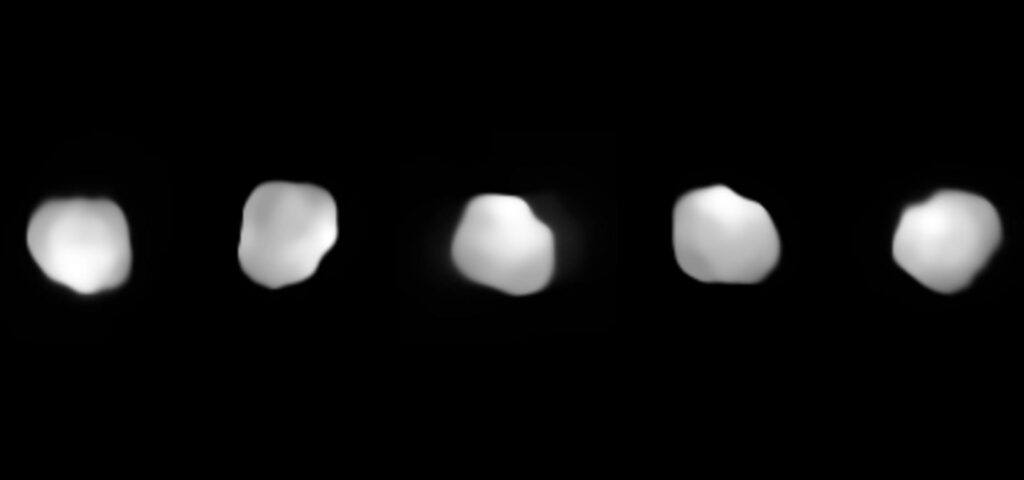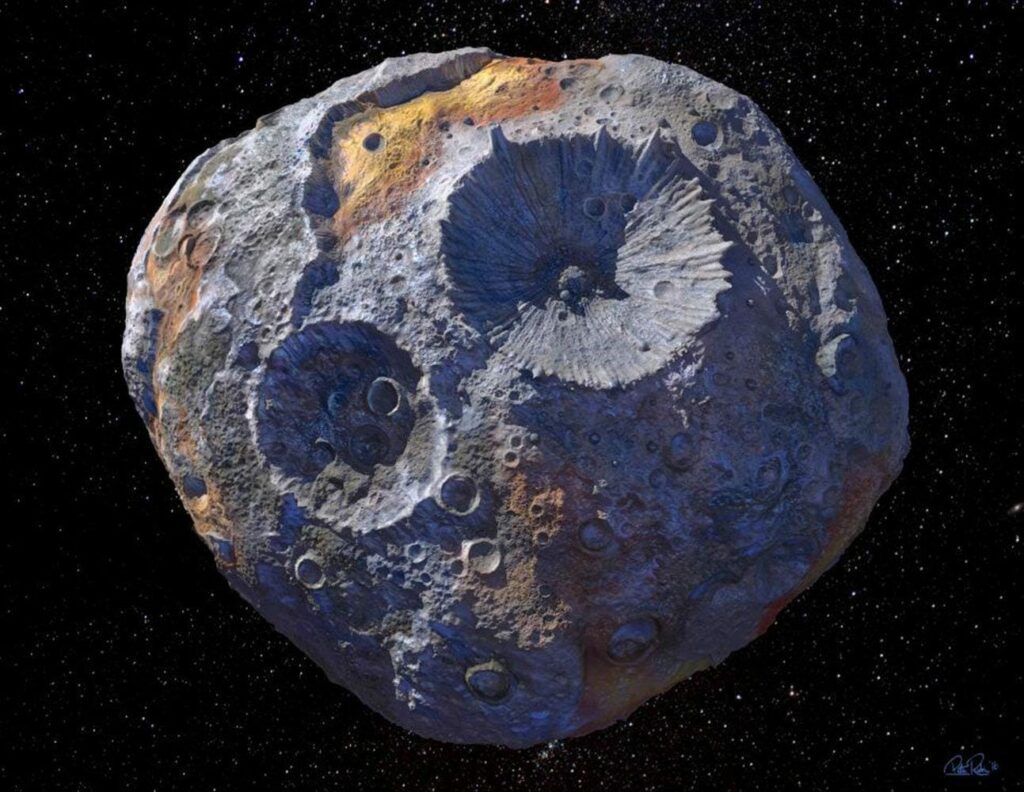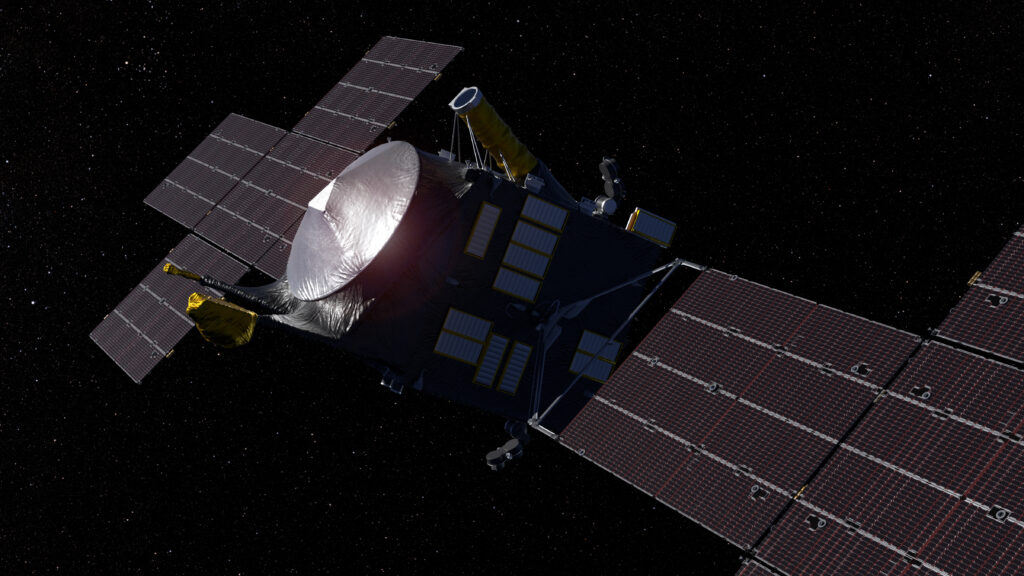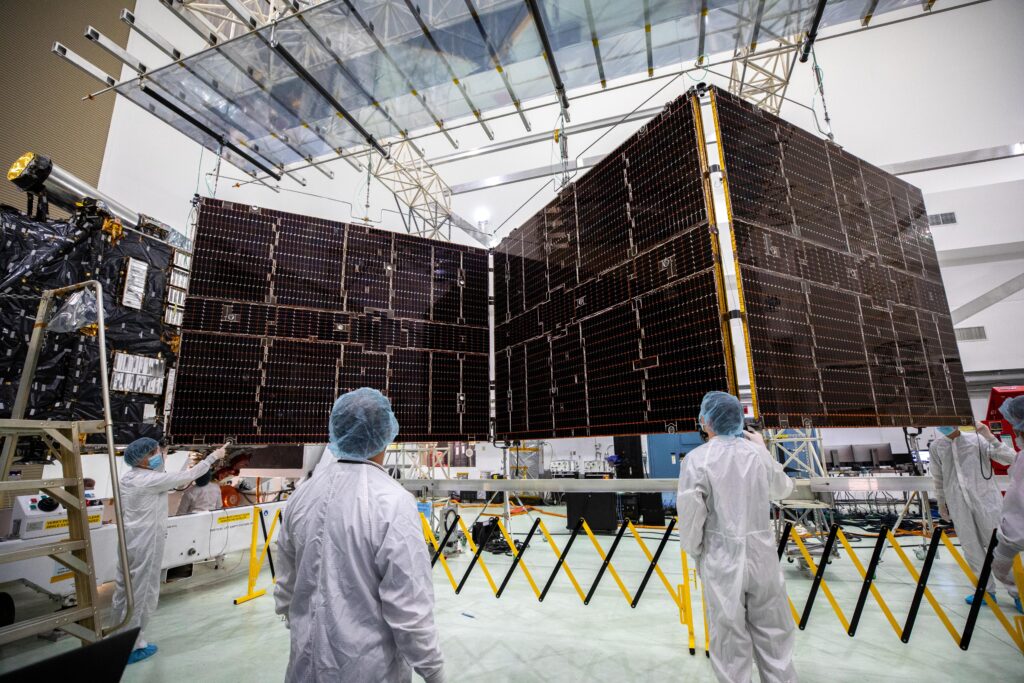On October 12, NASA plans to launch the Psyche mission. Its target will be the asteroid Psyche. But why is NASA so interested in this object? Let’s figure it out.
Fragment of a lost planet
The orbit of Psyche passes at an average distance of 437 million km from the Sun. This is about twice the radius of the orbit of Mars. The object has an irregular shape. Its dimensions are 280 by 240 by 170 km, which makes Psyche one of the ten largest bodies of the Main Asteroid Belt.

The radiation characteristics of the object support this hypothesis. But for final confirmation, researchers will need additional observations. The asteroid contains a large amount of metals. According to recent estimates, its average density is 3.977 g/cm3. This is much higher than most other Main Belt asteroids.
There is an assumption that such a high metal content is due to the fact that Psyche is a fragment of the core of a protoplanet destroyed at the dawn of the Solar System during a collision. In this case, its study will allow scientists to better understand how the rocky planets — including ours—are arranged.

At the same time, some data suggest that the asteroid may have a porous structure, which contradicts the model of the destroyed core. And the answer to the question about the mechanism of formation of Psyche is the main one for the mission of Psyche. The spacecraft will have to map the asteroid in detail and study its internal structure. These data will allow us to give a definitive answer to the question of what Psyche is.
Technical mechanism of Psyche
The Psyche probe was built by Maxar Technologies on the order of NASA. Its dimensions (excluding solar panels) are 4.9 by 2.2 by 2.4 meters, and its weight is 2,747 kg. Of these, 1085 kg are accounted for by xenon fuel for electric jet engines on the Hall effect. They will turn xenon into plasma, and then accelerate it in an electric field, creating a weak but continuous jet thrust that can be maintained for years. Due to the absence of atmospheric drag during its journey through the asteroid belt, the spacecraft will accelerate relative to the Earth to a speed of 200,000 km/h.

The spacecraft will receive energy from a pair of solar panels, which span is 25 meters, and the total surface area is 75 m2. These are the largest solar panels ever installed on a NASA spacecraft. Such an impressive size is due to the fact that Psyche reaches an order of magnitude less light than Earth. The Psyche solar panels will be able to generate 21 kW of energy in the vicinity of the Earth, but when the spacecraft reaches its target, this figure will be from 2.3 to 3.4 kW.

As for the scientific filling, it is represented by three instruments: a high-resolution multispectral camera, a spectrometer and a magnetometer. Psyche also carries an experimental laser communication system. It is expected that it will be able to transmit data 10 to 100 times faster than traditional radio communication.
Launch of Psyche
Psyche will be launched using a Falcon Heavy rocket. A live broadcast of this event will be conducted on the NASA website and on Youtube. At the moment, the launch of Psyche should take place on October 12 at 5:16 p.m. GMT+3. If, for some reason, the spacecraft fails to launch at the specified time, the ballistic window for the flight to Psyche will be open until October 25.
On the way to Psyche, the probe will fly over Mars to take advantage of the planet’s gravity to accelerate. In total, its journey will take six years. During this time, the probe will fly a distance of 3.6 billion km. The flight plan assumes that the spacecraft will reach Psyche in August 2029. The nominal scientific program of the mission is designed for 21 months, with the possibility of its subsequent extension.
Follow us on Twitter to get the most interesting space news in time
https://twitter.com/ust_magazine
